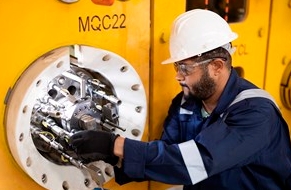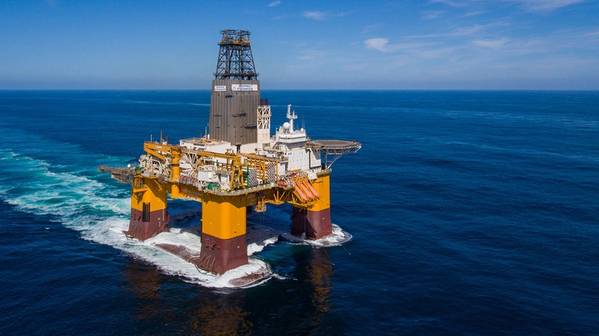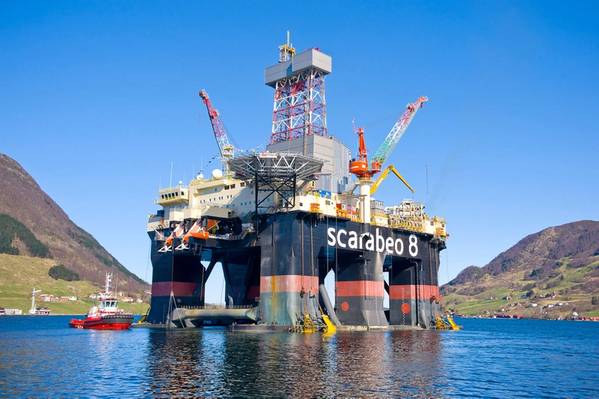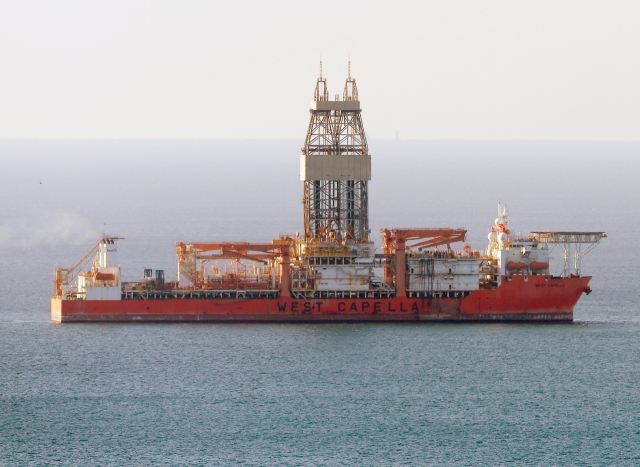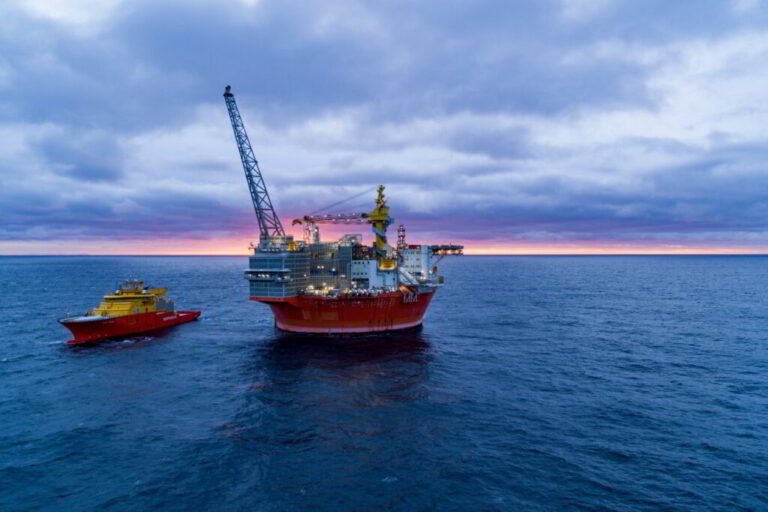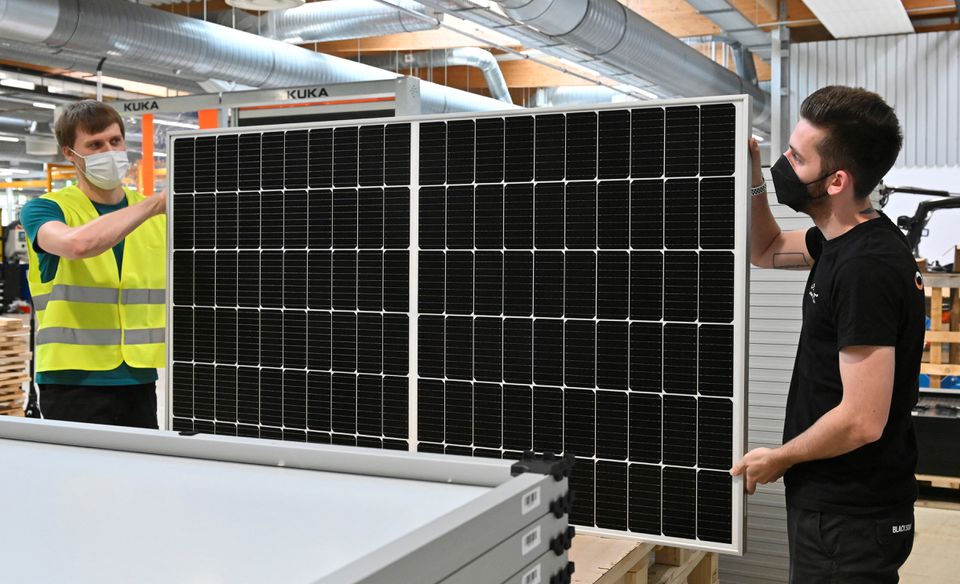
Two German renewable companies hope to build one of the country's biggest solar parks among rolling hills in the eastern district of Barnim to improve energy security in the face of an unprecedented supply crisis.
But the project faces dozens of hurdles, even as Russia, on which Germany has relied for decades, reduces gas supplies, raising fears of a total cut-off.
Although the renewable companies Notus and Boreas this month overcame objections from the municipality that had stalled it for 18 months, they need approval from some 30 public bodies that can each send reservations on the plan, which would then have to be adjusted.
Industry insiders say federal action is needed to remove local barriers to investment in solar, in much the same way as has happened for wind energy, and smooth the path to achieving a more ambitious goal on photovoltaic (PV) energy agreed by Germany's parliament this month.
The overall aim is that Germany should cover 80% of its electricity from renewables by 2030, up from a previous goal of 65% and a 41% share in 2021.
"The less time solar companies have to spend on paperwork, the more solar systems they can install in the coming years," Carsten Koernig, the head of Germany's solar power association said. He called for reform to lighten bureaucracy and for clear deadlines to accelerate decision-making.
Permitting and planning procedures have meant projects of similar scale in the state of Brandenburg, home of Barnim, have taken on average 10 years to get under way.
By German standards, the Barnim project is moving relatively swiftly after overcoming initial resistance, but it needs to retain the support of the municipal authorities that have the last word.
A spokesperson for Germany's economy ministry, which oversees energy issues, said the ministry was conscious of the possible need for further action.
"We are aware that the high expansion targets for PV pose a challenge. We will therefore closely monitor the further development of the solar parks and, if necessary, also examine further measures," the spokesperson told Reuters.
WINNERS VS LOSERS
Simone Krauskopf, the local mayor and head of a ten-member municipal council in Barnim, situated around an hour's drive from Berlin, told Reuters she was pleased when Notus and Boreas in January 2020 approached the council with an offer to build a solar park near the village of Tempelfelde.
With a planned installed capacity of around 110 megawatts peak (MWp) the project, which would span an area the size of more than 260 football pitches, could provide green electricity for over 30,000 households.
However, not everyone welcomed the application.
Some of Tempelfelde's residents said only the landowners leasing their land to the companies for around 2,000-to-3,000 euros ($3,042) per year per hectare and the companies themselves would benefit.
In a landscape popular for its hills and woodland, some also worried about the impact on tourism.
Juliane Uhlig said the project would have a negative impact on her small equestrian tourism business, as riding horses next to a massive solar park instead of fields of yellow rapeseed could deter potential customers.
"The whole of Brandenburg has been trying very hard in the last 20 years to establish itself as a tourist destination," Uhlig said. She said she was not against solar power, but that the project was too big for a small village that already had dozens of wind turbines.
"They're just the winners and we're the losers," she said.
MAIN BOTTLENECK: LOCAL APPROVAL
Uhlig, with some 20 other residents, began a citizens' initiative, in other words, a local campaign to pressure the companies to scale down their project or push the council to reject it all together.
The companies took on some of the initiative's suggestions of reducing the project’s scale and adding more greenery to surround the panels, Uhlig and the companies said.
The citizens' initiative still considered the project too big, and the municipal council initially voted against it last November before approving it in July - coincidentally on the same day as the Berlin parliament approved the new renewable energy law.
Andre Bartz, a project developer at Notus GmbH, said solar investors were used to opposition, but he considered the strength of feeling to be unusual.
Residents both opposed to the project and in favour of it said solar energy needs some of the regulation already in place for wind power where each state for instance has to set aside a minimum area for turbines.
For unsubsidised solar parks, regulation only provides general recommendations that are not binding.
"There are always only guidelines, and they are interpreted very differently by each municipality. That makes it difficult at times," Martin Steeb, a project developer at Boreas Energie GmbH, said.
Carsten Preuss, the chairman of the BUND environmental group in Brandenburg, said giving such latitude to local councils ran the risk of overwhelming people who work on a voluntary basis with procedure.
PERMITS TAKE 'FOR EVER'
Lea Mueller, a photovoltaic project developer at German utility EnBW, which operates Germany's largest solar park, said local petitions and citizens' initiatives meant some solar projects can take "for ever".
She said those involved need to focus more on solutions than problems, "sometimes thinking outside the box".
In Brandenburg, EnBW operates three large solar parks that generate as much electricity as 65,000 households equipped with roof-top solar panels, Mueller said.
The sparsely-populated state already produces more than a tenth of the energy consumed in Germany.
But to achieve the country's 2030 targets for PV, Germany needs more large-scale projects, or many smaller parks. "But if every small project takes as long as it currently does, I don’t think we can do it," she added.
The new renewable energy law declared the expansion to be of "outstanding public interest", which should accelerate approval procedures, the economy ministry spokesperson said.
It expands the areas permitted for solar along land areas including motorways and railway lines, the spokesperson added, and said that the ministry believed enough land was available for solar parks for now.
Even with the July approval from the Barnim council, whether Boreas and Notus will be able build their solar project, depends on securing many more permits.
Once those have been achieved, a final plan of between 700 and 900 pages will be presented to the council in Barnim.
Members of the citizens' initiative meanwhile intend to keep up the pressure throughout the process.
"We will definitely continue to stick our finger in the wound," Uhlig said.
Asked about a possible date when the solar project might get the go-ahead, Krauskopf was agnostic.
"In Germany, it often happens that laws are used to prevent things from happening," she said. "Not to make things possible."
($1 = 0.9859 euros)

